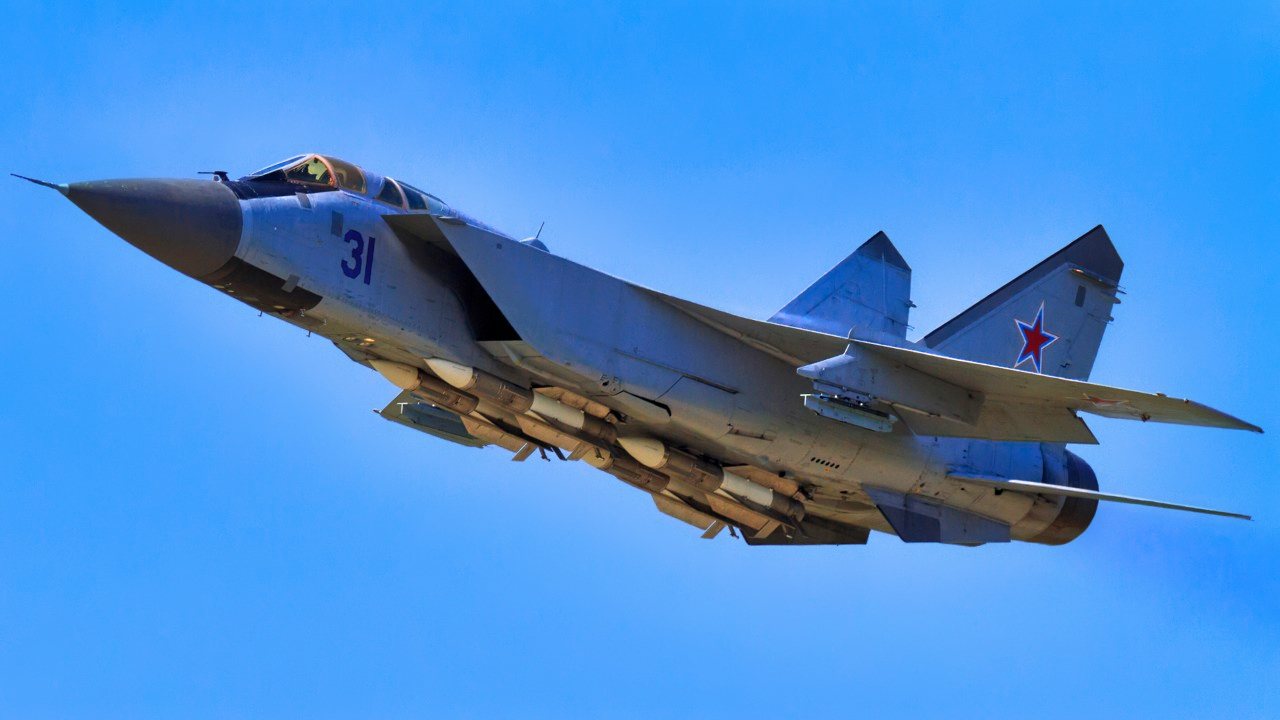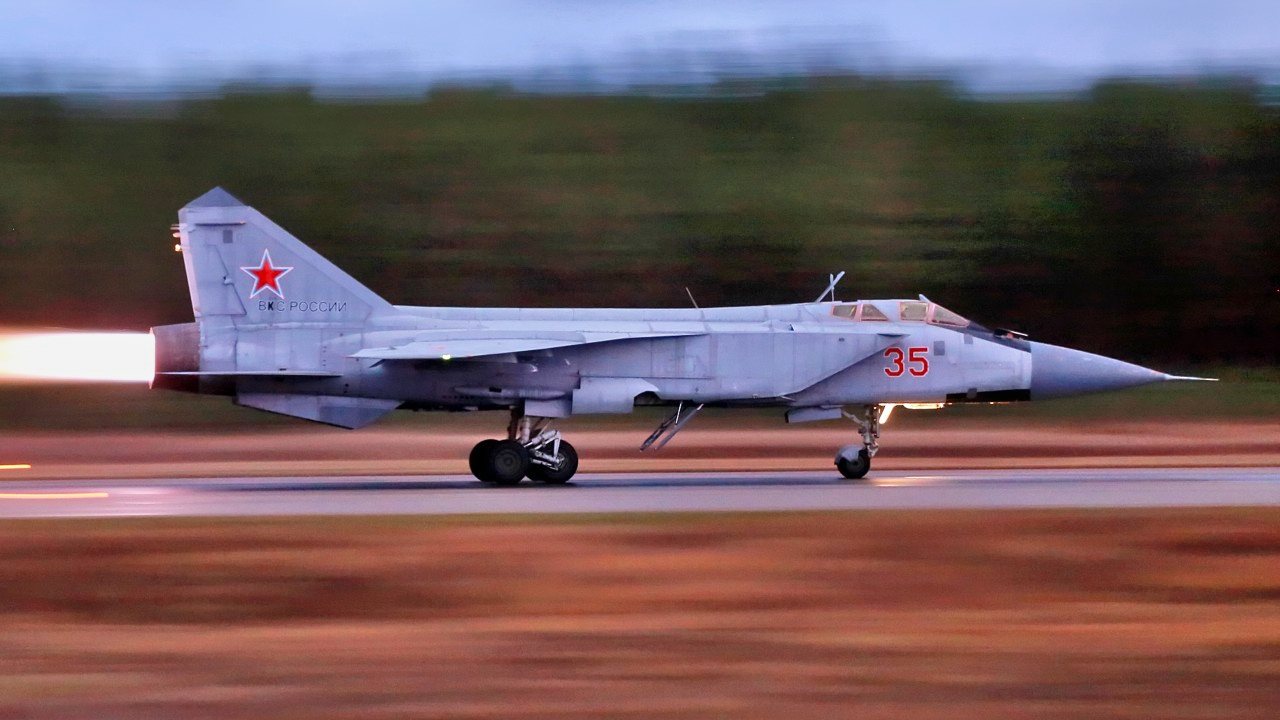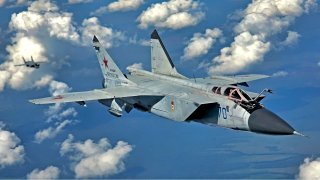MiG-31: The Mach 3.2 Fighter Russia Can't Get Rid Of
The Russians have relied on the MiG-31 during the invasion of Ukraine. Reportedly, MiG-31s shot down several Ukrainian aircraft, mostly with the long-range R-37 air-to-air missile. The Ukrainians do not have an aircraft that can match the MiG-31’s speed or altitude, meaning the MiG-31s have been able to operate in Ukrainian airspace virtually unopposed.
Known to NATO as the “Foxhound,” the Mikoyan MiG-31 is a supersonic interceptor produced from 1975 to 1994 and is still flown today.

Designed to replace the MiG-25 “Foxbat,” the MiG-31 was one of the fastest operational combat aircraft of its time. The MiG-31 is expected to remain in service with Russian and Kazakh forces until 2030 or later.
Replacing a Flawed Fighter
The MiG-25 was a single-seat fighter with impressive speed, altitude, and rate of climb. However, it was flawed in certain respects. It lacked maneuverability at the high speeds required for interception, and it proved especially difficult to fly at low altitudes. The MiG-25’s top speed was indeed impressive. The jet could reach Mach 3.2, although designers did not recommend exceeding Mach 2.83 for the risk of sustaining engine damage.
The Soviets began working on a replacement for the flawed MiG-25 in the early 1970s. By 1975, a prototype known as the Ye-155MP made its first flight.
The prototype that would become the MiG-31 looked much like the MiG-25, but it was an improved aircraft. One of the most important differences between the two jets was radar capability. The MiG-31, featuring a fuselage lengthened to accommodate a radar operator’s cockpit, was capable of both look-up and look-down/shoot-down engagement, and it could track multiple targets simultaneously.
The result was an interceptor aircraft that could track low-flying cruise missiles and bombers at long range. Although built as a predecessor to the MiG-25, the MiG-31 would also serve as a replacement for the Tu-128 long-range interceptor.
The Specifications of the MiG-31
The MiG-31 is a large two-seater with two engines and side-mounted air intakes. The wings are shoulder-mounted. The design was crafted around a specific set of mission objectives, which included intercepting cruise missiles and the aircraft from which the missiles originated, finding and eliminating low-flying missiles, UAVs, and helicopters, escorting bombers, and providing air defense.
However, the MiG-31 was decidedly not designed for close combat or rapid turning. Accordingly, the jet is only rated for five Gs while traveling at supersonic speeds. The wing load is marginal, and its thrust-to-weight ratio is respectable.

The MiG-31 was built with stronger wings and a stronger airframe than the MiG-25, which allows for supersonic flight in the dense air of low altitude. The aircraft was built from a nickel-steel alloy that permits the MiG-31 to tolerate the kinetic heating created at Mach 3 airspeeds. In all, the MiG-31 airframe is composed of 49 percent arc-welded nickel steel, 33 percent light metal alloy, 16 percent titanium, and 2 percent composites.
The MiG-31 carries two D30-F6 jet engines, which are rated for 152 kilonewtons of thrust. The D30-F6 is capable of propelling the MiG-31 to Mach 3.2 – but speeds above Mach 3 pose substantial risks to the engine and airframe and are not recommended. The MiG-31 is, therefore, redlined at Mach 2.83.
The Russians have relied on the MiG-31 during the invasion of Ukraine. Reportedly, MiG-31s shot down several Ukrainian aircraft, mostly with the long-range R-37 air-to-air missile. The Ukrainians do not have an aircraft that can match the MiG-31’s speed or altitude, meaning the MiG-31s have been able to operate in Ukrainian airspace virtually unopposed.
About the Author: Harrison Kass
Harrison Kass is a defense and national security writer with over 1,000 total pieces on issues involving global affairs. An attorney, pilot, guitarist, and minor pro hockey player, Harrison joined the US Air Force as a Pilot Trainee but was medically discharged. Harrison holds a BA from Lake Forest College, a JD from the University of Oregon, and an MA from New York University. Harrison listens to Dokken.
Images: Shutterstock.


